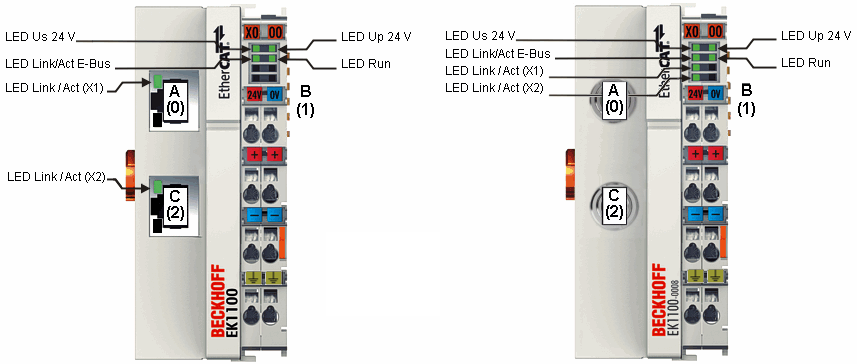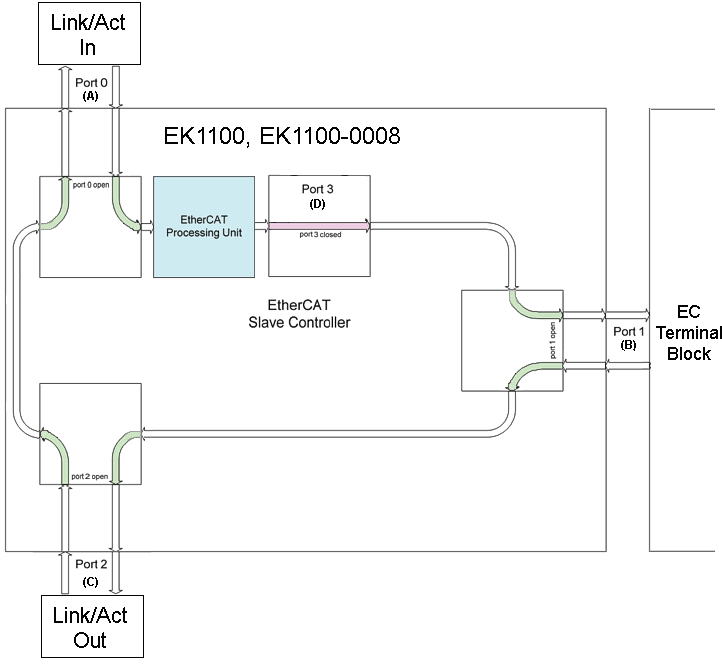EtherCAT coupler port allocation
According to the EtherCAT specification, an ESC (EtherCAT Slave Controller, hardware processing unit of the EtherCAT protocol) can have 1 to 4 ports, which it controls itself. Via an open port it can handle outgoing and incoming Ethernet traffic.
The following figure shows the direction of data flow in a fully connected EK1100 (or EK1100-0008) as an example:
 Fig.24: Example: EK1100 / EK1100-0008 EtherCAT coupler with 3 ports
Fig.24: Example: EK1100 / EK1100-0008 EtherCAT coupler with 3 ports The port assignment in the case of the EK1101, EK1501 and EK1501-0010, EK1814 applies accordingly.
 Fig.25: Internal and external port assignment for Bus Coupler EK1100 and EK1100-0008
Fig.25: Internal and external port assignment for Bus Coupler EK1100 and EK1100-0008 Frame processing sequence
- The EtherCAT frame arriving at the EtherCAT signal input is passed on by Port 0 (A) to the EtherCAT processing unit.
- The EtherCAT frame arrives at Port 1 (B) and the data frame departs via Port 1 (B) to the following slave in the EtherCAT terminal network (if a slave is connected there and reports ‘Link’).
- After the arrival of the data frame at Port 1 (B) from the terminal network, this is passed on to Port 2 (C) and leaves the coupler at the following EtherCAT output (if a slave is connected there and reports ‘Link’).
- The data frame arrives at Port 2 (C). This is now forwarded to port 0 (A) and leaves the EK1100 / EK1100-0008 via the EtherCAT input.
 | Processing of the data The data in the EtherCAT datagrams are processed only between Ports 0 (A) and 3 (D) in the EtherCAT processing unit. The non-implemented (internal) Port 3 (D) is considered to be closed and passes on the datagram to Port 1 (B). |